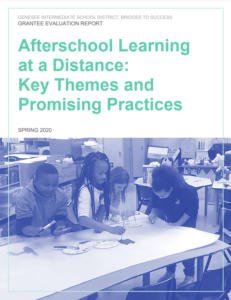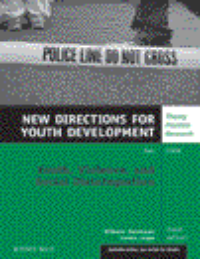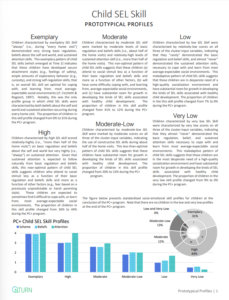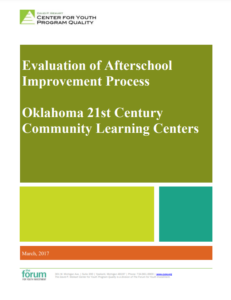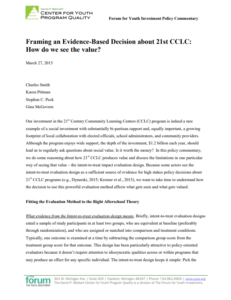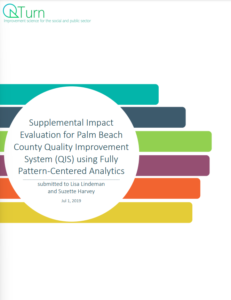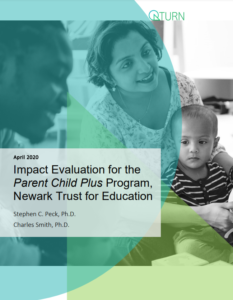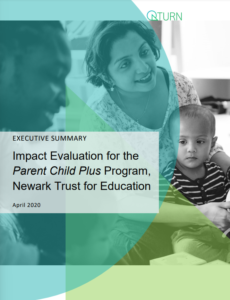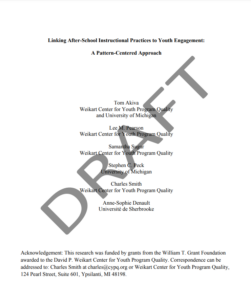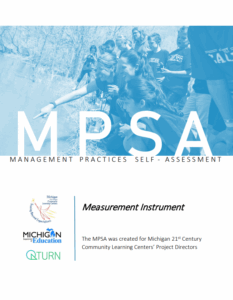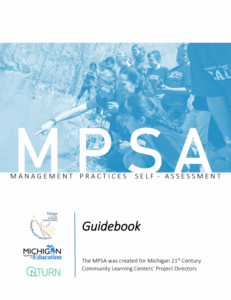Publications by Stephen Peck
Back to Publications
This report describes the experiences and practices of Genesee Intermediate School District: Bridges to Success (GISD) Team Leads and direct staff serving children and families after substantially redesigning afterschool programming due to the COVID-19 crisis.
This research article discusses efforts to define and improve the quality of afterschool services, highlighting areas of agreement and identifying leading-edge issues. We conclude that the afterschool field is especially well positioned to deliver high-quality services and demonstrate effectiveness at scale because a strong foundation has been built for continuous improvement of service quality.
This two-page information sheet explains youth profiles for SEL skills (low, moderate, and exemplary) as they relate to schemas, beliefs, and attention. Created as a supplement to QTurn’s impact report for the Newark Trust for Education Project (NTE) Parent Child Plus (PC+) program, this overview explains how various measurements are tied to key outcomes.
This paper describes implementation and outcomes for QIS in school-based summer learning programs in multiple cities.
This paper describes validity of QIS performance measures and longitudinal change over four years in Oklahoma 21st CCLC programs.
This report exemplifies use of the suite of SEL measures and benchmarks in the American Youth Circus Organizations network.
In this policy commentary, we do some reasoning about how 21st CCLC produces value and discuss the limitations in one particular way of seeing that value – the intent-to-treat impact evaluation design.
We sought to answer two specific questions about implementation and children’s SEL skill growth: What is the impact of QIS exposure on program quality (i.e., best practices, low staff turnover, great content), particularly for programs that have lower program quality at baseline? What is the impact of exposure to high program quality on student SEL skills?
The Quality-Impact-Equity Design and Methods (QDM) Toolbox was used to: (a) reconfigure existing measures for Parenting Practice Quality and Child SEL Skill to maximize reliability and validity for measuring socio-emotional skills and learning (SEL); (b) produce holistic profiles of parent and child skill at each timepoint; and (c) apply pattern-centered analytics to estimate impact and equity effects of the PC+
program as implemented in Newark.
This Executive Summary was developed to facilitate discussion and decision making. The detailed findings and method are available in the full report, Impact Evaluation for the Parent Child Plus Program, Newark Trust for Education (2020).
This paper uses pattern centered methods to describe the association between the quality of instruction available and youth’s level of mental engagement with that instruction.
This paper uses pattern centered methods to describe the association between the quality of instruction available and youth’s level of mental engagement with that instruction.
The Management Practices Self-Assessment (MPSA) is a measurement instrument created to empower Michigan 21st CCLC Project Directors, who manage at least one program site. The MPSA provides Project Directors with the opportunity to check-in with themselves and their team by identifying practices and policies that are well-documented and working well, or that could be updated or improved, and areas where they need additional assistance to reach their full potential.
The Management Practices Self-Assessment (MPSA) is a measurement instrument created to empower Michigan 21st CCLC Project Directors, who manage at least one program site. The MPSA provides Project Directors with the opportunity to check-in with themselves and their team by identifying practices and policies that are well-documented and working well, or that could be updated or improved, and areas where they need additional assistance to reach their full potential.
This paper describes a generic quality-outcomes design (Q-O design) that meets the need for performance measurement methodology for concurrent and integrated impact evaluation and continuous improvement in the same organization; that is, measure once, cut twice.
